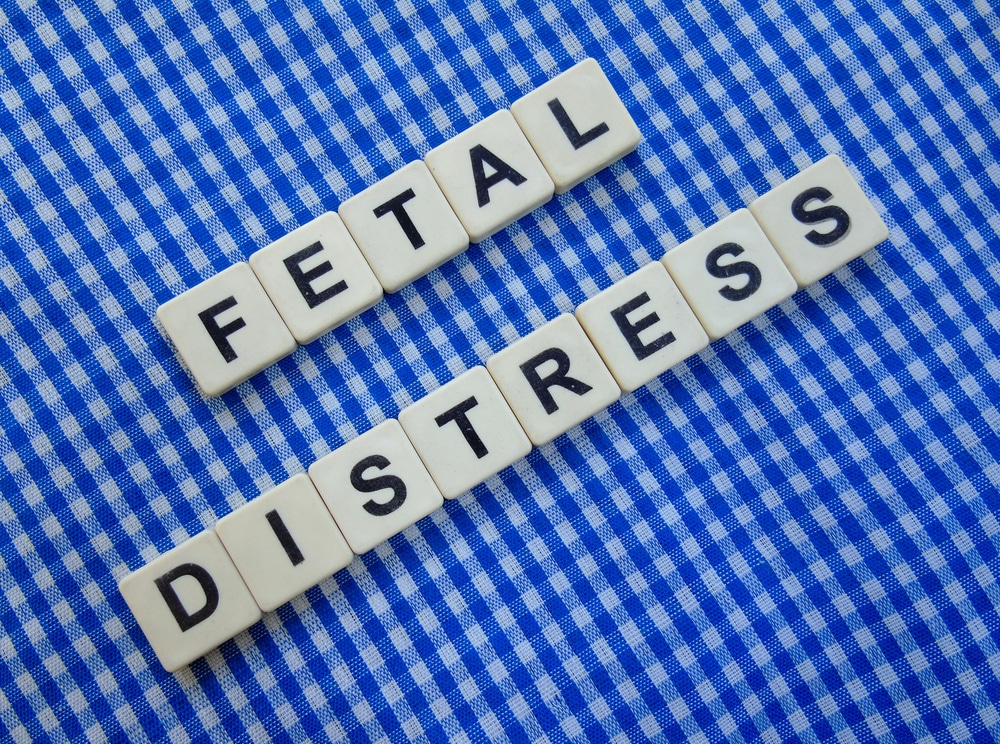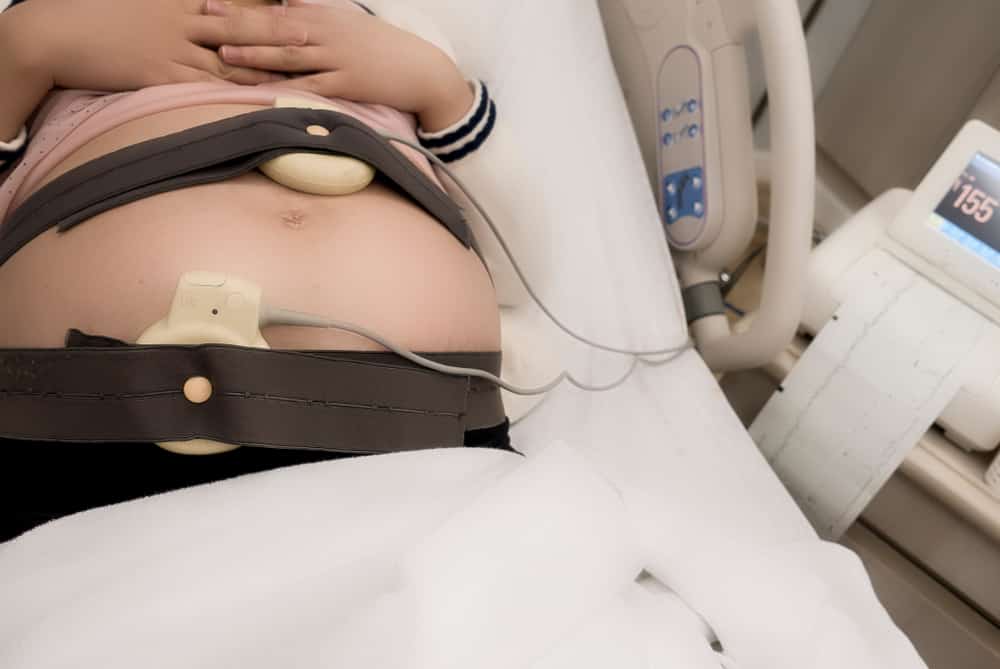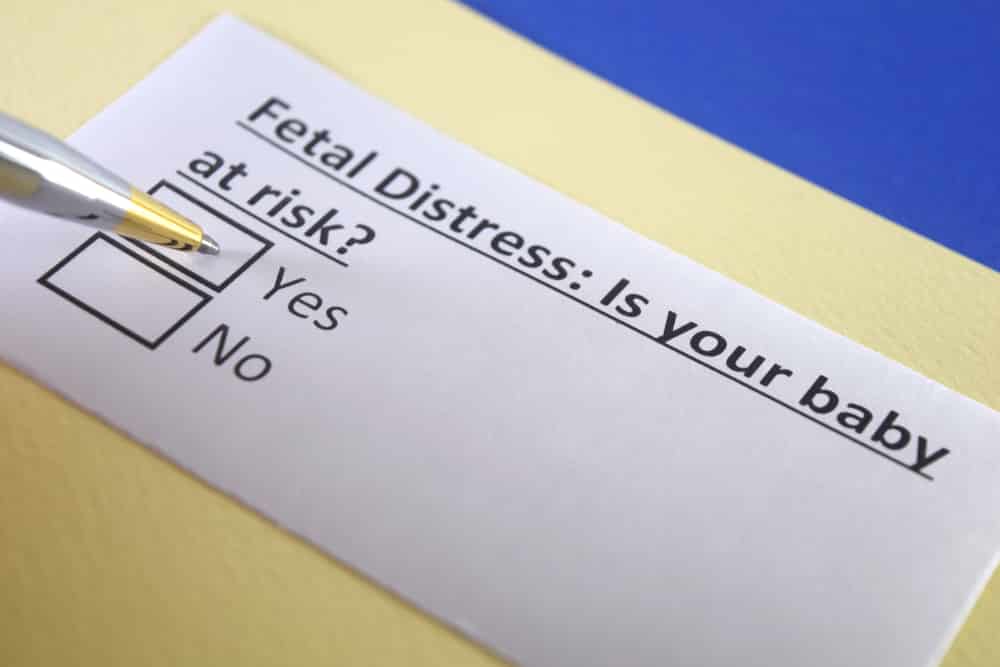As you anticipate and prepare for the big day when your baby will come, there are some unplanned processes that may come up. Labor can be long and very uncomfortable such as induced labor. Sometimes, it may bring with it some risks and threats to you, your baby, or both of you. One of these risks is fetal distress.
When your baby is in distress during labor, it is a sign that he or she is not coping well and your doctor needs to speed things up in order to save you and your baby.
This article provides you with all the info you need to have about fetal distress is; the causes, risk factors, complications, and the next steps to take.
Table of contents
What is fetal distress?
Fetal distress is also called “non-reassuring fetal status.” This rare complication is often associated with labor. However, it may also occur during pregnancy. It is a sign that your baby is not getting enough oxygen through the placenta.

Loss or reduction in the amount of oxygen supplied to your baby can lead to a reduced heart rate for your baby in the womb or during delivery. This always requires urgent medical attention. Most times, surgery is the best possible option.
If your baby does not get sufficient oxygen, he or she can end up breathing in amniotic fluid which contains meconium. (Meconium is the waste product or feces of your child produced while in the womb). This can make breathing difficult for your baby after delivery, and in some bad cases, he or she may not breathe at all.
What Causes Fetal Distress?
The commonest cause of fetal is distress is a disruption in the supply of oxygen to the baby due to problems associated with the placenta or the umbilical cord. Problems of the placenta include placenta insufficiency or placenta abruption. Sometimes, umbilical cord compression may also cause fetal distress.
In addition, underlying health conditions such as uncontrolled diabetes, problems with the kidneys, or liver disease may also lead to fetal distress. Furthermore, studies have shown that overdue pregnancies and prolonged labor also cause fetal distress in most women.
Other times, too strong or too close contractions during labor can also be a precipitating factor for fetal distress. Other major causes of fetal distress include:
- Preeclampsia.
- Placenta abruption.
- Intrauterine growth restriction (IUGR).
- Lying flat on your back for a long period of time during labor. This eventually puts pressure on your big and major arteries, cutting off the supply of blood, and ultimately, oxygen, to your baby.
- Excess amount of amniotic fluid.
- Insufficient amount of amniotic fluid.

Risk Factors for Fetal Distress
Your baby is at risk of experiencing fetal distress if:
- There’s a long or complicated labor.
- The pregnancy is overdue.
- You have preeclampsia.
- There is a history of uncontrolled diabetes.
- You have excess or insufficient amniotic fluid.
- Your baby has intrauterine growth restriction.

- There’s a problem with the placenta.
- You have had a stillbirth before.
- You have a multiple pregnancy (i.e., being pregnant with more than one baby at a time).
- There’s a problem with the umbilical cord.
- You smoke.
- You are obese.
- If you have an underlying chronic disease like kidney problem.
Diagnosing fetal distress
To diagnose fetal distress, the baby’s heart rate must be read.
A slow heart rate or a heart rate with an unusual pattern is a pointer to fetal distress. Fetal distress can also be picked sometimes during routine antenatal checkups. This is done when your doctor or midwife listens to your baby’s heart during pregnancy.
During labor, your baby’s heart rate is usually monitored to check for signs of fetal distress.

Fetal distress can also be diagnosed if there is meconium in the amniotic fluid. A greenish or brown-colored amniotic fluid suggests the presence of meconium in the amniotic fluid which can lead to fetal distress.
What Can Be Done if Your Baby is in Distress?
Before labor,
- If you notice a change in the movement or kick count of your baby, you need to call your doctor.
- If your water breaks and it is greenish or brownish in color, you need to go to the hospital immediately. It is a sign that that amniotic fluid is stained with meconium already.
During labor,
- You will be placed on a fetal monitor to check the activities of your baby and to know whether he or she is in distress.
- If your doctor or midwife notices your baby is in distress, you will be given oxygen and some IV fluids.
- Also, you may be asked to change or move position by turning to another side. This can help to reduce the baby’s distress.
- Labor-inducing drugs like oxytocin may be withrawn in cases of fetal distress.
- If your labor is natural, you may be given drugs to reduce your contractions because contractions that are too strong can cause fetal distress.
- If these methods above do not work, your doctor or midwife may need to assist your delivery. This is because a baby in distress has to be born quickly. This can be achieved via assisted delivery with the use of a forceps or vacuum extractor or you may need to undergo an emergency cesarean section.
Complications of fetal distress
Although fetal distress can be managed adequately, babies who experience it are at risk of greater complications after birth. The complications can also result from the cesarean section or the assisted delivery process used. Some of these complications are:
- Injury to the brain due to lack of oxygen supply.
- Cerebral palsy.
- Loss of blood by the mother during cesarean section.
- Infections.
- Mild difficulty in feeding
- Jaundice which is usually short-term
- Sometimes, still birth.
Conclusion
Every pregnancy is different and each comes with its own peculiarities. That your baby experienced distress in this pregnancy does not mean babies in subsequent pregnancies will suffer the same.
You can speak with a counselor or your doctor if you are traumatized by your experience during your previous pregnancy.
References
Parer, J. T. and Livingston E. G. (1990). What is fetal distress? American Journal of Obstetrics and Gynecology. Jun;162(6):1421-5; discussion 1425-7. Accessed on 7th January, 2022 from https://doi.org/10.1016/0002-9378(90)90901-I
Suresh Tharmaratnam (2000). Fetal distress. Best Practice & Research Clinical Obstetrics & Gynaecology. Volume 14, Issue 1, February 2000, Pages 155-172. Accessed on 7th January, 2022 from https://doi.org/10.1053/beog.1999.0069

